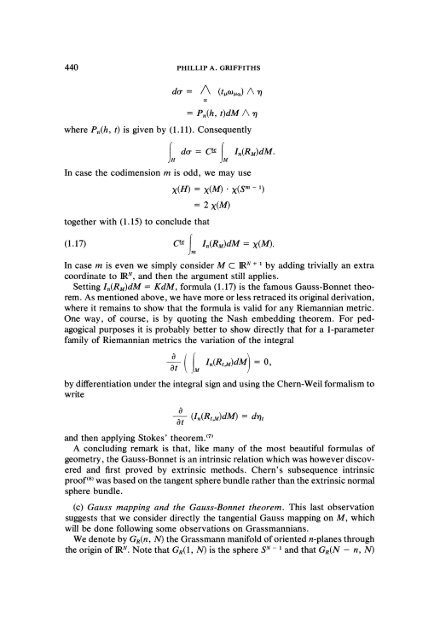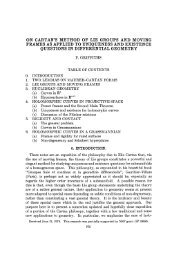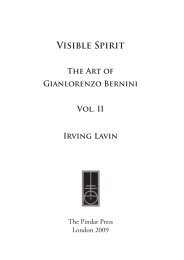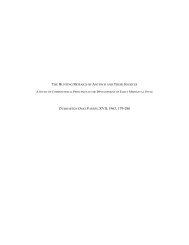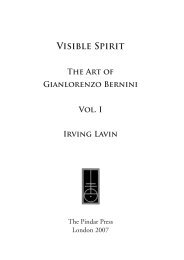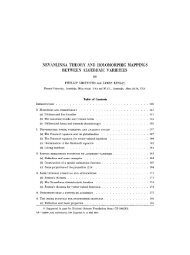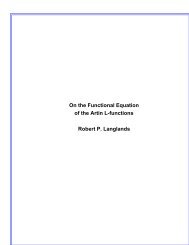View PDF - Project Euclid
View PDF - Project Euclid
View PDF - Project Euclid
You also want an ePaper? Increase the reach of your titles
YUMPU automatically turns print PDFs into web optimized ePapers that Google loves.
440 PHILLIP A. GRIFFITHS<br />
do- A A n<br />
P,(h, t)dM A l<br />
where P,(h, t) is given by (1.11). Consequently<br />
d" cte It I,,(RM)dM.<br />
In case the codimension m is odd, we may use<br />
x(H) x(M) x(S m- 1)<br />
2 x(M)<br />
together with (1.15) to conclude that<br />
Im (1.17) Cte I,,(RM)dM x(M).<br />
In case m is even we simply consider M C IRN / by adding trivially an extra<br />
coordinate to IRN, and then the argument still applies.<br />
Setting In(RM)dM KdM, formula (1.17) is the famous Gauss-Bonnet theorem.<br />
As mentioned above, we have more or less retraced its original derivation,<br />
where it remains to show that the formula is valid for any Riemannian metric.<br />
One way, of course, is by quoting the Nash embedding theorem. For pedagogical<br />
purposes it is probably better to show directly that for a 1-parameter<br />
family of Riemannian metrics the variation of the integral<br />
by differentiation under the integral sign and using the Chern-Weil formalism to<br />
write<br />
Ot<br />
(I,,(R,,M)dM)<br />
and then applying Stokes’ theorem. (7<br />
A concluding remark is that, like many of the most beautiful formulas of<br />
geometry, the Gauss-Bonnet is an intrinsic relation which was however discovered<br />
and first proved by extrinsic methods. Chern’s subsequence intrinsic<br />
proof (s was based on the tangent sphere bundle rather than the extrinsic normal<br />
sphere bundle.<br />
(c) Gauss mapping and the Gauss-Bonnet theorem. This last observation<br />
suggests that we consider directly the tangential Gauss mapping on M, which<br />
will be done following some observations on Grassmannians.<br />
We denote by Gn(n, N) the Grassmann manifold of oriented n-planes through<br />
the origin of IRN. Note that Gn(1, N) is the sphere S N and that Gn(N n, N)


